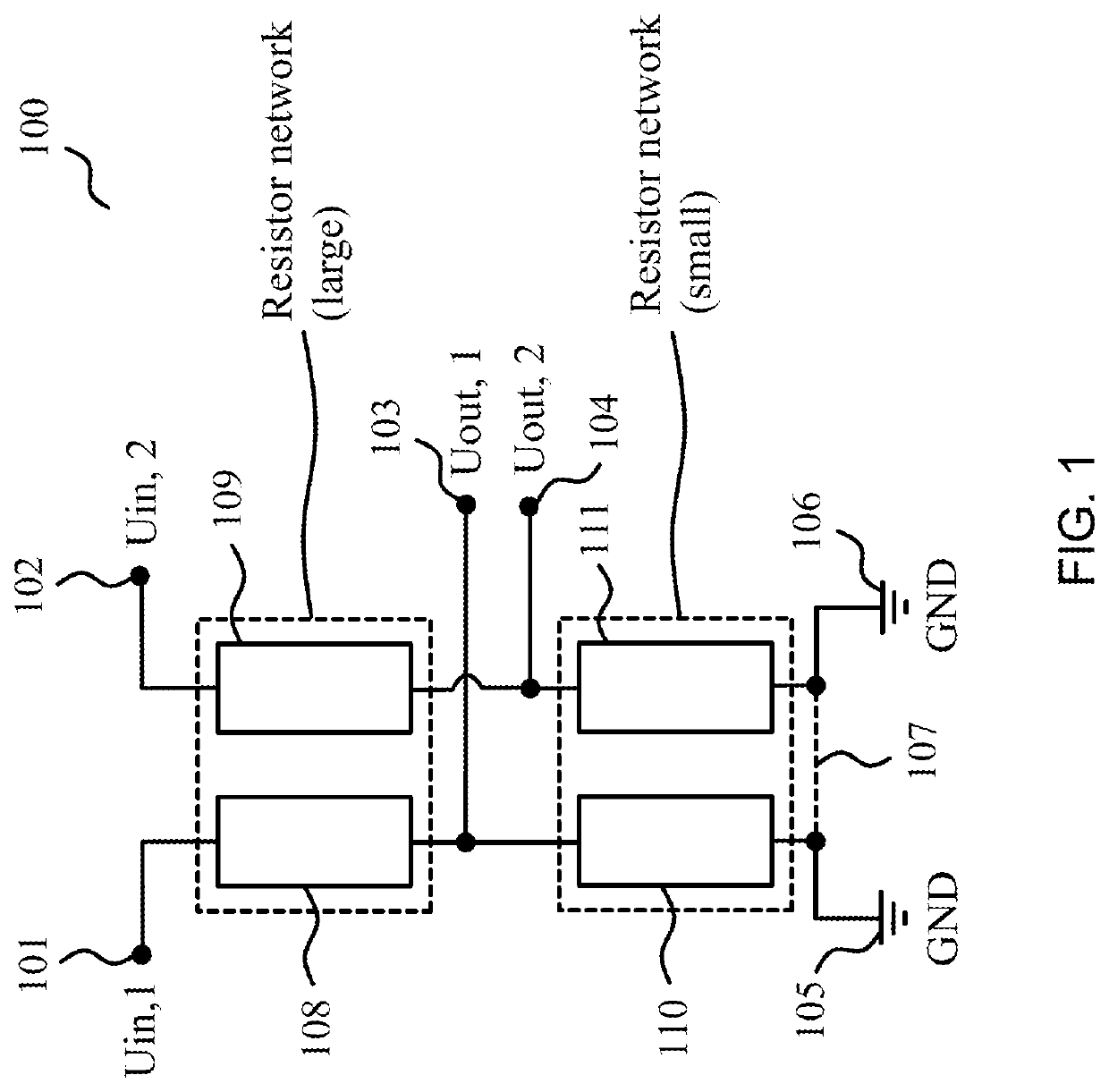Temperature compensation circuit in a voltage measurement
- Summary
- Abstract
- Description
- Claims
- Application Information
AI Technical Summary
Benefits of technology
Problems solved by technology
Method used
Image
Examples
Embodiment Construction
[0027]The present invention discloses an apparatus and method for temperature compensation within a voltage measurement of a substantially large voltage. Also a computer program and a computer program product are aspects of the same invention.
[0028]The present invention is based on continuous, real-time compensation between similarly behaving electrical components.
[0029]The starting point of the present invention is that a relatively high voltage is desired to be accurately measured. This process may happen in cold or warm temperatures, ranging from −30 . . . +50° C. for example. In the present invention, a voltage division principle can be applied in a form of a voltage divider circuit. This is exemplified in a circuit diagram shown in FIG. 1.
[0030]The circuit 100 in this embodiment comprises two main parts: a large resistor network 108, 109 comprising large resistances, and a small resistor network 110, 111 comprising small resistances. The voltage Uin, 1 101 is an unknown, large ...
PUM
 Login to View More
Login to View More Abstract
Description
Claims
Application Information
 Login to View More
Login to View More - R&D
- Intellectual Property
- Life Sciences
- Materials
- Tech Scout
- Unparalleled Data Quality
- Higher Quality Content
- 60% Fewer Hallucinations
Browse by: Latest US Patents, China's latest patents, Technical Efficacy Thesaurus, Application Domain, Technology Topic, Popular Technical Reports.
© 2025 PatSnap. All rights reserved.Legal|Privacy policy|Modern Slavery Act Transparency Statement|Sitemap|About US| Contact US: help@patsnap.com

